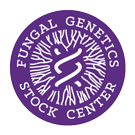Strain: Neurospora crassa
FGSC #7349
Reporting Genes: thi-1 ad-9 nit-1 het-5PA
Species: crassa
Allele: 56501 Y154M37 34547 PA
Alternate Strain Number: DJ947-25a
Depositor: DJJ
Linkage Group: IR
Mating Type: a
Genetic Background: SL9
Opposite Mating Type: 7348
ref1: Perkins, Leslie and Jacobson 1993 FGN 40, https://doi.org/10.4148/1941-4765.1419
Genes
